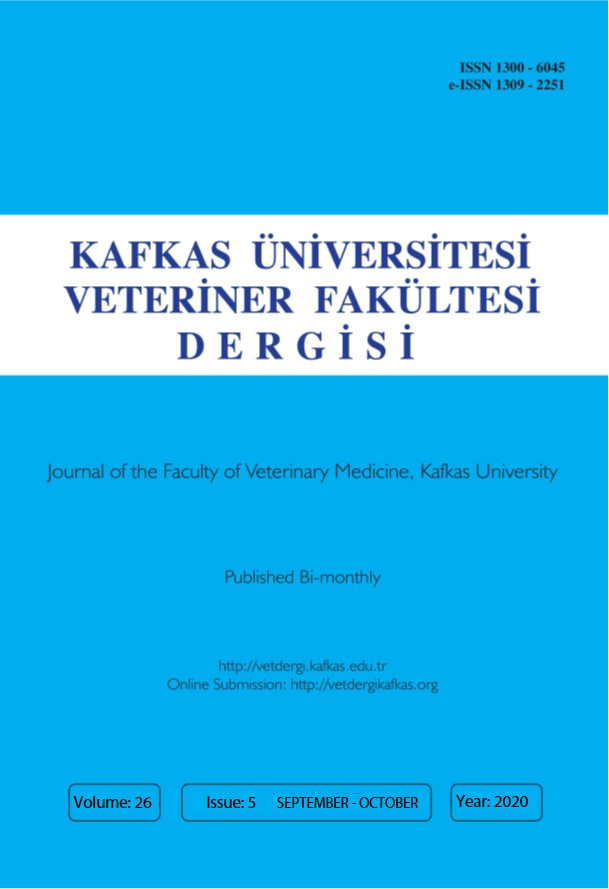
This journal is licensed under a Creative Commons Attribution-NonCommercial 4.0 International License
Kafkas Üniversitesi Veteriner Fakültesi Dergisi
2020 , Vol 26 , Issue 5
Complete Genome Sequencing of Mycoplasma bovis Type Strain Ningxia-1 and Systematic Bioinformatic Characterization for Housekeeping-related Genes
1School of Agriculture, Ningxia University, Yinchuan 750021, CHINA2Academy of Animal Science and Veterinary Medicine, Qinghai University, Xining 810016, CHINA
3Department of Pathogen Biology and Immunology, Basic Medical Science School, Ningxia Medical University, Yinchuan 750021, CHINA
4Regional Center for Mycology and Biotechnology, Al-Azhar University, Cairo 11751, EGYPT DOI : 10.9775/kvfd.2020.24089 Mycoplasma bovis is a major pathogen leading to bovine respiratory disease syndrome. The worldwide prevalence of this pathogen has caused enormous economic losses in the beef industry. Substantial efforts have been made to identify and characterize the surface proteins of M. bovis. However, little is known regarding experimentally proved housekeeping genes, or the distribution and the number of motifs within these genes in M. bovis. We used Picbio SMRT technology of next-generation sequencing for M. bovis Ningxia-1 isolation and applied different tools (Mega X, STRING v11.0, TMHMM v2.0, MOTIF) for bioinformatics analysis. The present study compared M. bovis Ningxia-1 strain with another ten M. bovis strains with sequenced whole genome and identified 24 housekeeping genes in each strain. The phylogenetic tree indicates a close relationship between M. bovis Ningxia-1 with NM2012 based on BLAST results of these genes. Within the 24 housekeeping genes in M. bovis Ningxia-1 stain, 3/24 (12.5%) of the genes have the potential to be used as internal control genes, 2 sets of proteins have interactions which have been proved under experimental and database conditions. MetG is a putative transmembrane protein, while others are predicted to be located outside of the membrane. Additionally, there are 6 common motifs distributed among 7 of the proteins (29.17%). Our bioinformatic analysis is intended to provide new and complementary data in mining and making comparisons of housekeeping genes through M. bovis type strain Ningxia-1 sequencing. Keywords : Mycoplasma bovis, Next-generation sequencing, Housekeeping gene, Bioinformatic analysis










